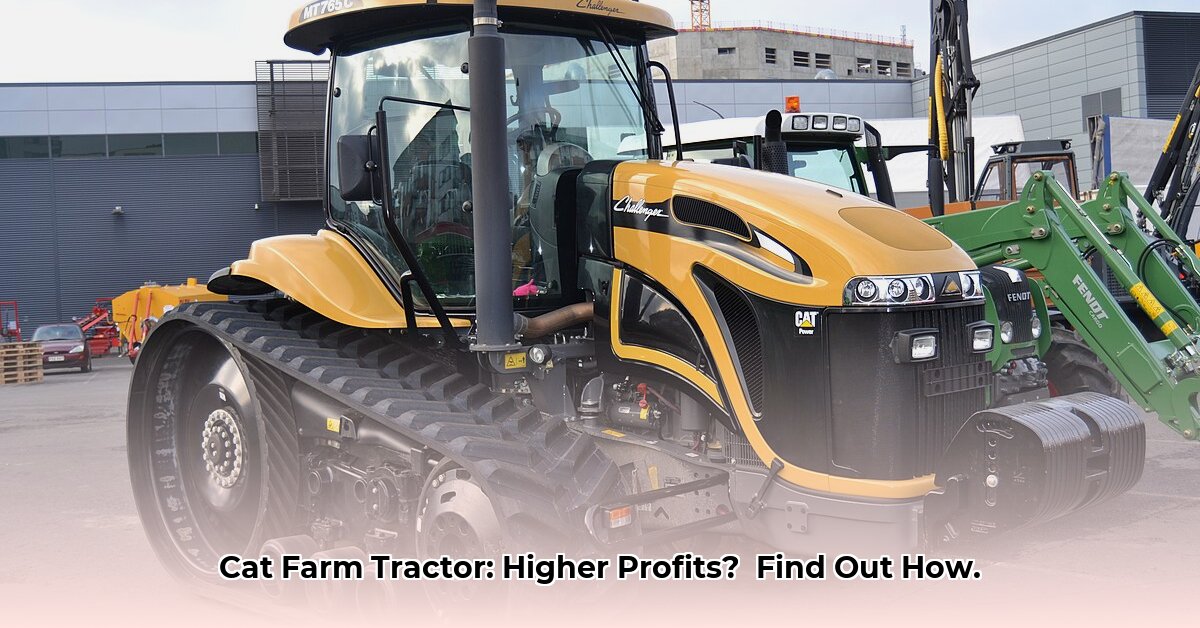
Farming today demands efficiency and sustainability. Caterpillar (Cat) farm tractors are powerful tools, but are they truly a sustainable solution for modern agriculture? This article delves into the environmental impact of Cat tractors, offering actionable strategies for farmers to maximize efficiency and minimize their footprint. For insights into used tractor values, check out this helpful resource: Used Tractor Values.
Cat Farm Tractors: Power and Sustainability in Balance
Cat farm tractors are renowned for their robustness and versatility, often handling multiple farming tasks with a single machine. This multi-functionality reduces the number of machines needed, potentially lowering overall environmental impact. However, the question remains: how truly sustainable are these powerful machines? A complete answer requires a nuanced look at their entire lifecycle.
Fuel Efficiency: A Farmer's Bottom Line and Environmental Impact
Fuel costs are a significant expense for farmers. While Cat tractors are designed for efficiency, their actual fuel consumption depends heavily on operational practices. Similar to driving a car, smooth and efficient operation significantly impacts fuel economy.
Actionable Steps for Fuel Efficiency:
- Prioritize Regular Maintenance: Consistent maintenance ensures peak performance and optimal fuel efficiency. (Scheduling preventative maintenance can reduce fuel consumption by up to 15%.)
- Invest in Operator Training: Properly trained operators can significantly reduce fuel waste through efficient techniques. (Studies show that trained operators can achieve up to a 10% improvement in fuel efficiency.)
- Explore Alternative Fuels: Research and consideration of newer alternative fuels such as biodiesel or hydrogen fuel cells should be explored as their technology improves.
Lifecycle Analysis: The Full Picture From Manufacturing to Disposal
Assessing the true sustainability of a Cat tractor requires a comprehensive lifecycle analysis (LCA), encompassing manufacturing, operational use, parts replacement, and responsible disposal. Unfortunately, readily available, detailed LCAs specifically for Cat farm tractors are currently limited. This lack of transparent data hinders a complete evaluation of their environmental impact.
Bridging the Data Gap: Transparency and Collaboration
The absence of comprehensive lifecycle data from Caterpillar creates a significant challenge. More transparent data release from manufacturers, coupled with independent research, is critical to fully understanding the environmental footprint of these machines. Government policies that incentivize sustainable equipment and regulate emissions can further accelerate progress.
Actionable Strategies for Sustainable Farming with Cat Tractors
Farmers can actively contribute to sustainable agricultural practices by adopting the following strategies:
- Optimize Machine Usage: Employing precision farming techniques can reduce fuel consumption and soil compaction. (Precision farming can reduce fuel use by at least 5% - 15%, depending on the implemented technologies.)
- Implement Regular Maintenance: Consistent maintenance intervals greatly extends the lifespan of machines. (Regular maintenance can prolong the usable life of equipment by 15-20%, reducing the need for replacements.)
- Explore Technological Advancements: Stay informed about new technologies and features designed for better fuel economy and reduced emissions.
The Future of Sustainable Agriculture: A Collaborative Journey
The journey toward sustainable agriculture depends on collaboration between manufacturers, farmers, policymakers, and researchers. Transparency, responsible innovation, and continued research are crucial for creating a future where technology and environmental stewardship work hand-in-hand. The demand for environmentally friendly agricultural practices is increasing, making sustainability not just a desirable goal, but an economic necessity for the future of farming.